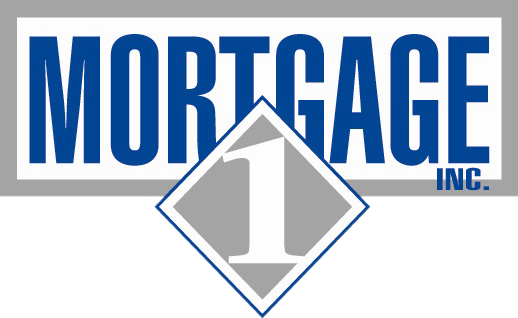
Mortgage 1’s Lindsey Smith Named 2021 Rising Star by MMLA
October 28, 2021
Explained: Four Popular Types of Mortgage Loans
November 10, 2021More than 44 million Americans carry student debt. While this is often viewed as an investment in the future, the plain truth is that it takes quite a chunk out of the present budget. And if you’re paying off student debt while also trying to afford a home, that extra debt can seem very overwhelming. Worse, it can negatively impact your chances of getting approved for a mortgage.
Earlier this year, the FHA announced a change in how it calculates payments on student loan debt in connection with home loan applications. Read on to find out what this was and how it can benefit you.
| Need help finding your first home?
Mortgage 1 has helped more than 87,000 people become home buyers.Contact us today or call 866-532-0550 or locate a Mortgage 1 loan officer near you to discover why Mortgage 1 is the most trusted lender. |
What’s an FHA Home Loan?
An FHA loan is a mortgage that’s insured by the Federal Housing Administration (a branch of the U.S. Department of Housing and Urban Development) and issued by an approved lender like Mortgage 1. It is available as a traditional 30-year loan and a 15-year loan, with both fixed and adjustable interest rates. A major selling point for FHA loans is that they allow for higher debt-to-income ratios and lower down payments; this means they’re often more achievable for people with student loans and other forms of debt.
You can read more about getting an FHA loan and why FHA mortgages are popular elsewhere in our blog.
Why Debt Ratios Are Important
To understand the new FHA loan guidelines, it’s important to understand how debt affects your chances of getting a mortgage.
In most cases, mortgage loan providers want to see less than 43% of your monthly income going to debt payments, which include credit card payments, rent or mortgage payments, car payments, and – of course – student loan payments. The higher your debt payments, the less likely you are to be able to keep up your loan payments, which makes you a high risk to the lender.
What Changed for People with Student Debt?
Now, you may think that your student loan payment is simply the amount you pay each month. Let’s say that’s $350. However, until recently, student loan payments in an FHA loan weren’t calculated by the actual amount paid per month. Instead, they were calculated as 1% of the unpaid loan amount.
Let’s say you recently graduated with a master’s degree and $70,000 in unpaid student loans. Although you might be paying $350 per month for your student loan, the FHA counted your payment as $700, or 1% of the remaining amount. That $350 difference can be huge, especially if you’re working in a field that’s not particularly high-paying.
So what changed? The FHA decided to use your actual payment amount instead of a percentage of the unpaid amount. The exception to this is for people whose current loan payments are $0 (e.g. because of deference or forbearance); for them, the payment is calculated as half a percent of the unpaid amount.
Additionally, according to the National Association of Realtors, “lenders may now exclude student loan debt payment amounts from a borrower’s monthly debt calculation where written documentation from the student loan program, creditor, or student loan servicer indicates that the loan balance has been forgiven, canceled, discharged, or otherwise paid in full.”
Learn More About Mortgage and Loan Options
As you can see, paying off your student debt doesn’t necessarily mean you can’t also pay for a new home. If you’re not sure about what your budget or options are, contact a Mortgage 1 lender today and find out if home ownership is closer than you think!





